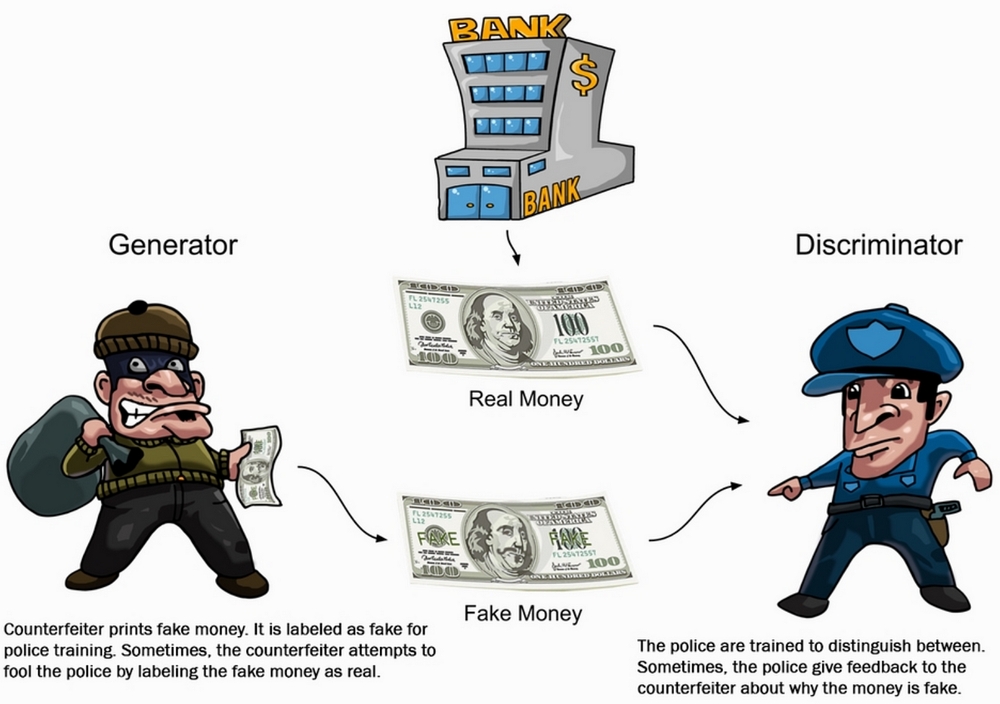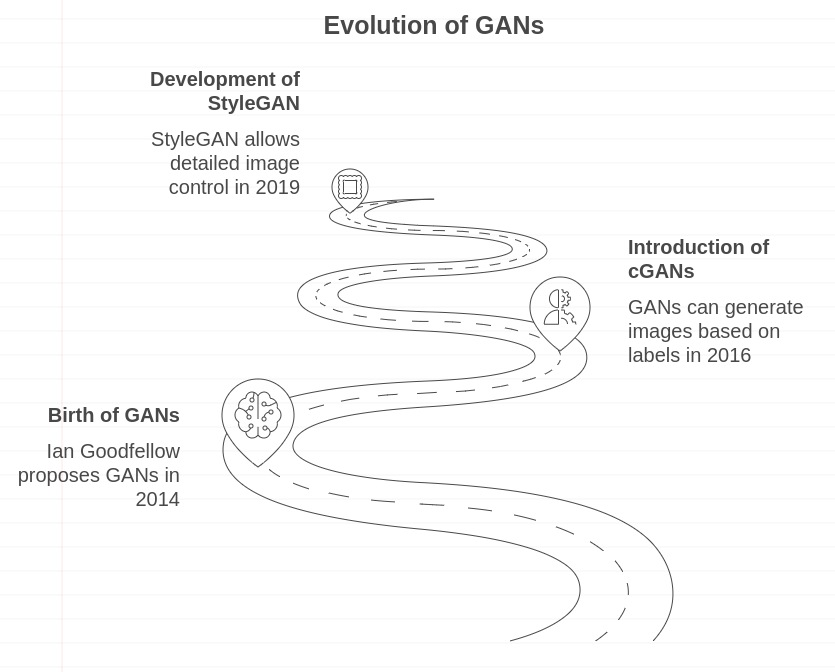Published
•4 min read
Demystifying GANs: How Machines Learn to Create
Discover how Generative Adversarial Networks (GANs) transformed machines into creators, from art to medicine, with humor and depth.

Demystifying GANs: How Machines Learn to Create
Generative Adversarial Networks (GANs) have flipped the script on AI, enabling machines to create instead of just analyze. Whether it’s generating lifelike faces, upscaling low-resolution images, or even composing music, GANs are the ultimate creative duo. Let’s take a fun, deep dive into how they work, their evolution, and why they’re so impactful.
What Are GANs, and Why Are They Special?
At the heart of a GAN are two players locked in a never-ending duel:
- The Generator: This network generates data, trying to pass it off as real.
- The Discriminator: This one judges the Generator’s work, classifying it as real or fake.
Think of the Generator as a sneaky counterfeiter printing fake money and the Discriminator as a sharp-eyed detective. The better the counterfeiter, the sharper the detective becomes. Eventually, the fake money becomes so good even the detective is fooled!
Why GANs Matter
GANs are more than just tech wizardry. They’ve reshaped industries:
- Art: GANs can mimic Van Gogh or Picasso, even if they don’t know who they are.
- Medicine: GANs generate synthetic medical images to train AI systems without risking patient privacy.
- Entertainment: Deepfake technology (yes, GANs are behind those convincing videos) and CGI have entered a new realm.
A Quick Timeline of GANs

The story of GANs begins in 2014, in what could be described as a caffeine-fueled moment of brilliance. Ian Goodfellow proposed an idea that would forever change the field of artificial intelligence: Generative Adversarial Networks. The first version of GANs was far from perfect—imagine a painter trying to create a masterpiece while blindfolded. It wasn’t about beauty yet, but the mere ability to generate something was revolutionary. This marked the beginning of a journey toward machines that could learn not only to mimic but also to create.
By 2016, GANs had evolved into something far more sophisticated with the introduction of Conditional GANs (cGANs). It was no longer about creating anything random; it was about generating exactly what you wanted. This leap added precision and flexibility to GANs, making them immensely more useful and opening up new creative possibilities.
Then came 2019, a defining year for GANs, when StyleGAN took center stage. This was the moment GANs became true artists. StyleGAN offered users detailed control over the features of generated images—face shapes, hairstyles, and even subtle expressions. The results were stunningly realistic human faces that looked like they belonged on Instagram profiles, even though they weren’t real people. StyleGAN wasn’t just an incremental improvement; it was a transformation, a leap into a future where machines didn’t just follow instructions—they created with style and precision. These milestones showcase how GANs rapidly evolved, moving from rudimentary sketches to breathtaking artistry in just a few years.
How Do GANs Work?
Let’s break this down:
- Start with Noise: The Generator begins by creating random noise. Think of it as a terrible artist sketching random blobs.
- Feedback Time: The Discriminator evaluates the blobs and says, “Nope, this isn’t even close.”
- Improvement Through Feedback: The Generator adjusts its approach, inching closer to realism. Over many iterations, the blobs evolve into pictures.
It’s like baking cookies with no recipe—burnt batches at first, but eventually, you’re serving Michelin-star desserts.
Applications That Wow
1. Image and Video Creation
GANs can create photorealistic human faces or enhance old, pixelated photos into HD wonders.
2. Virtual Worlds
From creating NPCs in games to designing virtual landscapes, GANs are redefining digital creativity.
3. Healthcare
In medicine, GANs synthesize medical images to train AI systems. A doctor can’t tell the difference, and that’s the point!
Challenges That Keep Researchers Awake
-
Mode Collapse: Sometimes, the Generator gets lazy and outputs the same data repeatedly. Imagine a chef who only knows how to cook spaghetti—delicious but limited.
-
Training Instability: GANs are finicky to train. It’s like teaching two toddlers to share toys; chaos often ensues before harmony.
-
Computational Costs: Training GANs can feel like trying to boil the ocean—resource-heavy and time-consuming.
The Future of GANs
GANs are just getting started. Future advancements include:
- Better Multimodal Generation: Combining text, image, and video generation seamlessly.
- Ethical Use: Tackling misuse like deepfakes while enabling positive applications.
Conclusion
GANs have redefined what machines can achieve, transforming artificial intelligence from a tool of analysis to one of creativity. From their humble beginnings to generating lifelike images and beyond, they have shown us the potential of combining competition and collaboration within neural networks.
But what comes next? As GANs continue to evolve, how will they shape industries like art, healthcare, and entertainment? Can we ensure their ethical use in a world where fake and real are increasingly indistinguishable? The journey of GANs is far from over, and their future holds endless possibilities. Are we ready to embrace this new frontier of machine creativity?